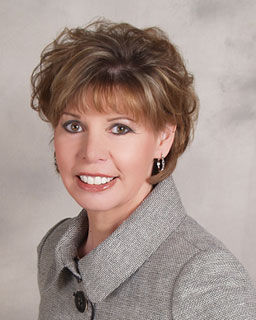This issue of “Straight talk” is a continuation of the previous column published in the March-April 2010 issue.1 It contains more media tips and advice from experts in the field.
From Marlys Miller, Pork Magazine
“Everyone has a love-hate relationship with the media, including myself. We want the news, but we don’t always like what we hear or how it’s presented. Certainly the 24-hour cable news networks and the evolving new social media sectors are not helping matters. Both are blurring the lines of what is and isn’t news. Here’s a tip: opinions and commentaries are just that, they are not news.
What’s more, today’s technology lets anyone be a reporter, but that doesn’t mean what they report is quality or even accurate. We saw some of that during the Novel H1N1 2009 influenza outbreak last spring.
Indeed, the media is an easy and therapeutic punching bag, some of which is deserved. At the same time, the public get what they ask for on the basis of what they tune into or read or, unfortunately, what sells.
Now, getting off that soap box, swine veterinarians can and should play a vital role in communicating for the pork industry in particular, as well as agriculture and food production in general. You are a trusted, informed, and valued source.
The public holds your expertise in high regard and trusts your scientific and empathetic roles; after all, you care for farm animals’ health and well-being. You may not want to talk to the ‘general’ media, but you should. Just be aware that they are not industry insiders – be prepared, choose your words carefully, and don’t use slang or jargon. It’s wise to be cautious, but be friendly and professional, never defensive or demeaning. How you come across is often more important than what you say. Understand that you don’t control the outcome. The more you push, the less it will work in your favor. If you haven’t had media training, it’s worth signing up; both state and national pork associations offer programs.
I heard a USA Today reporter tell a room of packers that if ‘you don’t talk to me and tell me your side of the story, I will find someone who will, and you probably won’t like it.’ Accessibility and cooperation is key; that doesn’t mean you have to give a reporter unlimited time.
As for media within the ag industry, take it to heart that we’re on the same side you are – keeping producers and the industry informed and successful. Even if it’s a controversial subject, we’re just looking for honest, accurate information. There’s so much good information that needs to reach producers and the rest of the industry. Work with us in that effort by helping us boil down the message, identify what’s important and useful, and help convert the science into useful on-farm application.
Of course, if you have an idea, see a trend, or find that there is a need for more coverage on a topic, don’t hesitate to contact us.”
From Charlie Arnot, CMA Consulting
“Food-animal veterinarians have a unique opportunity to build consumer trust in contemporary livestock production. Consumers who are generationally and geographically removed from farming are less comfortable with how meat, milk, and eggs are produced today, and the voices questioning our practices are growing in number, volume, and impact. As trusted sources of credible information, food-animal veterinarians can play a key role in building consumer trust, IF we take the right approach.
Theodore Roosevelt said, ‘People don’t care how much you know, until they know how much you care.’ Consumer research proves he was right. Research that has been peer reviewed and published indicates that shared values or ethics are three to five times more important in building trust than demonstrating our technical competence. Focusing our communications on shared values instead of technical information is a paradigm shift for agriculture and veterinary medicine. The questions being asked by consumers today are ‘should you do that,’ not ‘can you do that.’ Those are fundamentally different questions that require different answers. The former is about values and ethics, the latter about science.
The next time a reporter, consumer, or client raises a question about contemporary production, remember to lead with values and support with science. It might sound something like this: ‘I’m glad you asked me about indoor livestock production. I can tell you care about animals. As a veterinarian, I care about animals too. I know that raising livestock indoors has helped us improve their health and well-being by protecting them from weather, predators, and parasites. It also allows us to produce a safe, nutritious, and affordable supply of food.’ If you lead with values and support with science, you can help build public trust in how we produce milk, meat, and eggs today.”
Reference
1. Raef TA. The other side of the microphone. Straight talk. J Swine Health Prod. 2010;18:105.
-- Tracy Ann Raef

